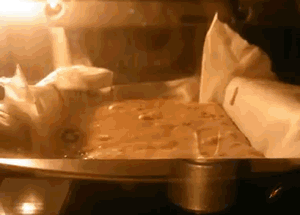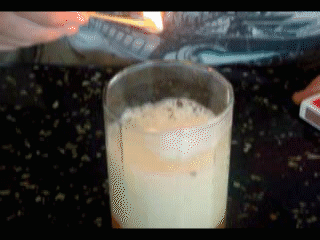Chemistry of cake baking
A delicious fluffy cake just doesn't happen by chance.
It takes a harmless chemical reaction to make a cake fluffy and light.
Baking powder is mixed with an acid to produce carbon dioxide. This gas
is harmless when eaten. As it becomes hot in the oven the gas expands
and makes bubbles in the cake mixture. This makes the cake rise.


2) Cooks put ascorbic acid and bicarb soda into bread and cake mixtures. Suggest why?
3) Some confectionery fizzes in your mouth. They contain
bicarb soda and citric acid. Explain how the fizz sensation is created.
4) Some chefs use yeast. Explain why yeast is used in cake baking?
5) Where else is yeast used?
